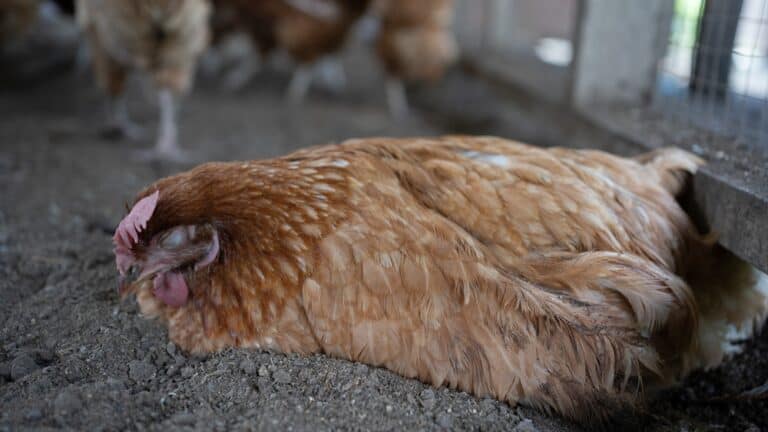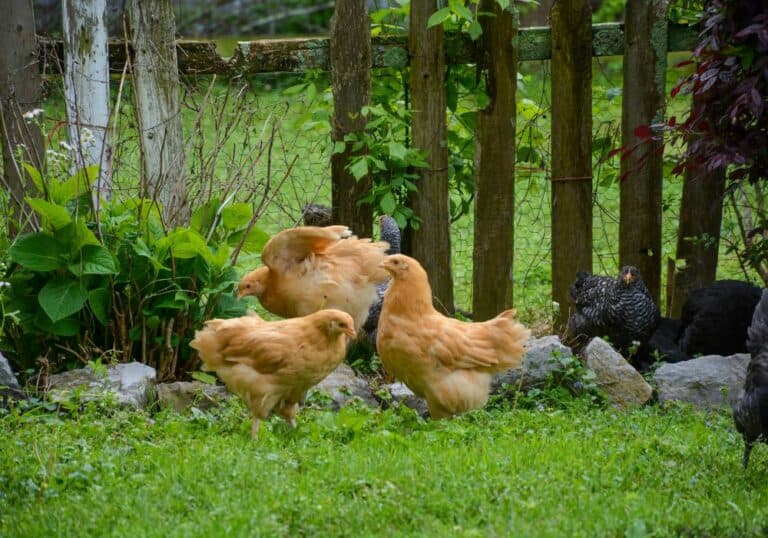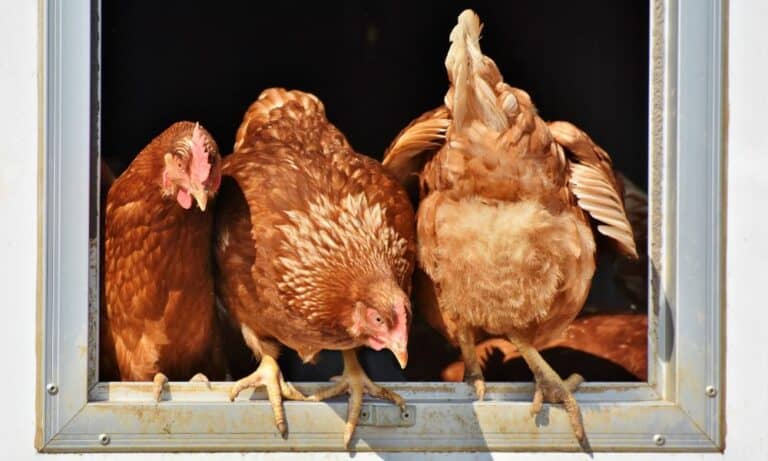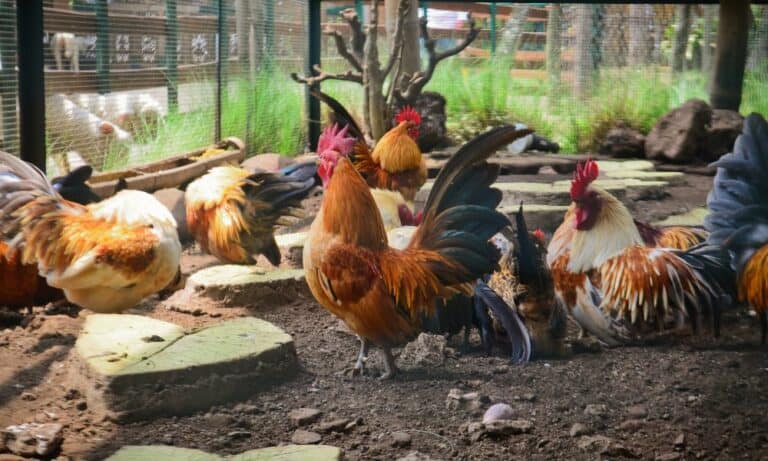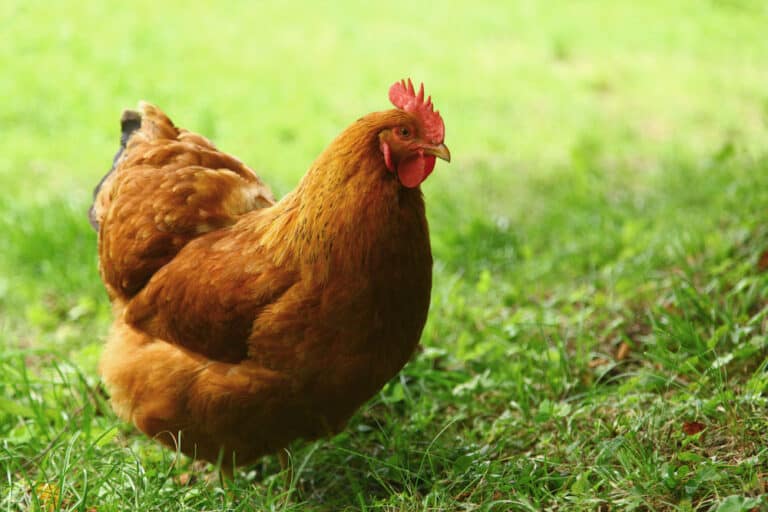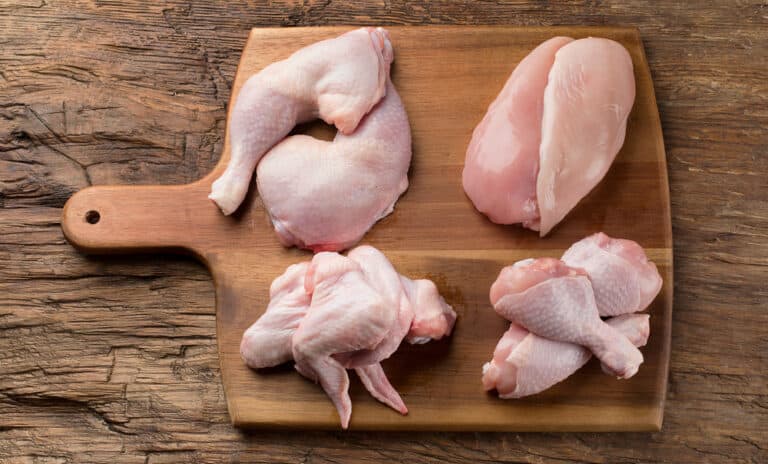Unfortunately, both benign and pathological parasites are a part of our reality, and finding living species without such a problem is virtually impossible. Whether external or internal, their goal is to find a host that provides them with food and stay tightly bound to it as long as possible.
Typically, you can notice chicken parasites during the warm period of the year since it provides ideal temperatures for their proliferation. Be careful since untreated parasite infestation may result in exhaustion, secondary infections, and even a fatal outcome.
Chicken Parasites Chart |
|
| External parasites | Internal parasites |
Mites
|
|
| Lice | Ascarids (roundworms) |
| Fowl ticks | Gapeworms (nematode) |
Chicken fleas
|
|
| Bedbugs | Capillariasis (threadworms, hairworms) |
Internal Chicken Parasites
Parasites live in hosts, typically human, animal, or bird bodies, and use their resources. You can recognize two internal parasite types in chickens, worms and protozoa, that cause more or less health problems.
Even though signs of infestation are sometimes mild, you can often face slow growth, poor appetite, and low egg production in your flock. In most cases, parasites compromise the birds’ immunity making them susceptible to bacterial infections.
1. Coccidiosis
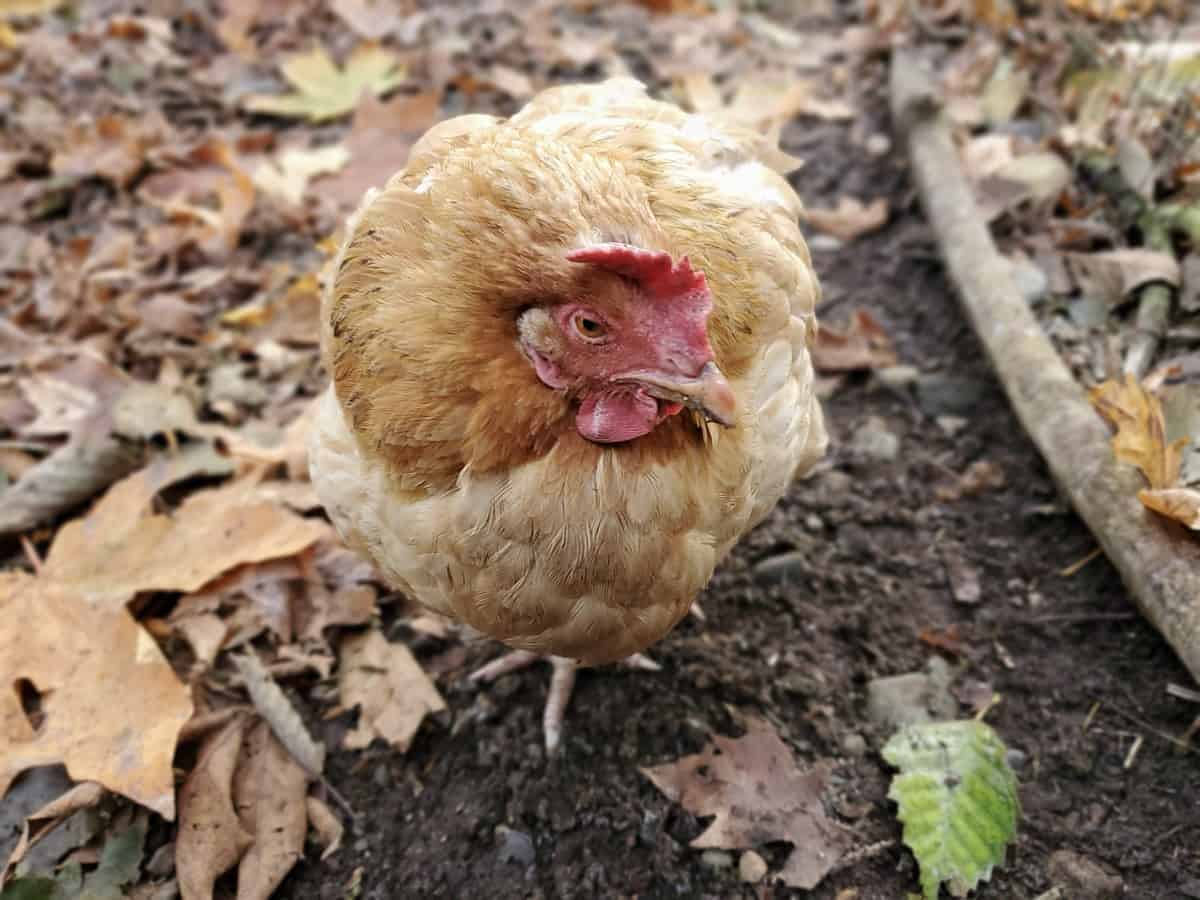
Eimeria species is a protozoan parasite living in the chickens’ gut lining that causes intestinal disease. There is probably no small flock completely free of their presence. You can recognize seven specific types affecting chickens, but only two are pathogenic.
Nowadays, you can vaccinate your flock, but be aware that this disease primarily affects fowl with a weak immune system. Healthy birds successfully cope with a moderate infestation, while older ones often develop immunity.
On the other hand, coccidiosis is often fatal in chicks and stressed birds. Severe symptoms include:
- Lethargy and lack of appetite
- Watery stools with blood traces
- Reduced egg production
- Signs of anemia
Treatment options include probiotics and an anticoccidial drug, flubendazole, given in feed for a week.
2. Ascarids (Ascaridia galli)
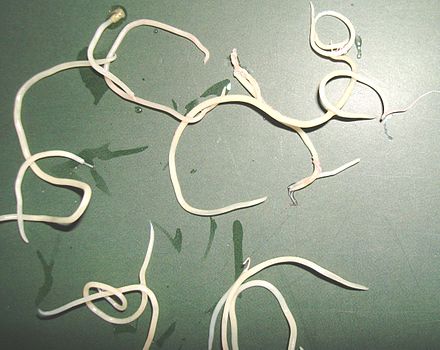
These roundworms are the most damaging chicken worms and are approximately 2.85 to 4.5 inches (72.4 to 114 mm) long. In most cases, it is impossible to notice signs of mild infestations, while severe cases include:
- Increased appetite followed by weight loss
- Egg-laying reduction and pale yolk color
- Worms in chicken poop
- Intestinal blockage, leading to fatal outcomes
Since parasite eggs are in chicken poop, new birds become infected by ingesting such droppings. You can expect increased problems with these worms in summer. Treatment includes anti-parasitic drugs added to the drinkers.
3. Gapeworms (Syngamus trachea)
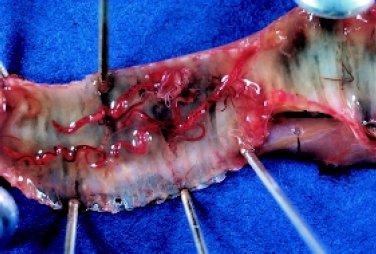
These parasitic nematodes, well-known as red tracheal worms, live in the chicken trachea, while the primary disease carriers are wild birds. Males are about 0.30 inches (7.6 mm) long, while females often reach a length of 0.80 inches (20.3 mm).
You can see these Y-shaped worms attached to the tracheal wall in permanent copulation. Chickens cough up eggs, quickly infecting other flock members.
You can suspect this disease when seeing fowl gasping for air, snicking, and walking around with elongated necks. It is possible to solve the problem by treating the flock with ivermectin and moxidectin.
4. Cestodes (tapeworms)
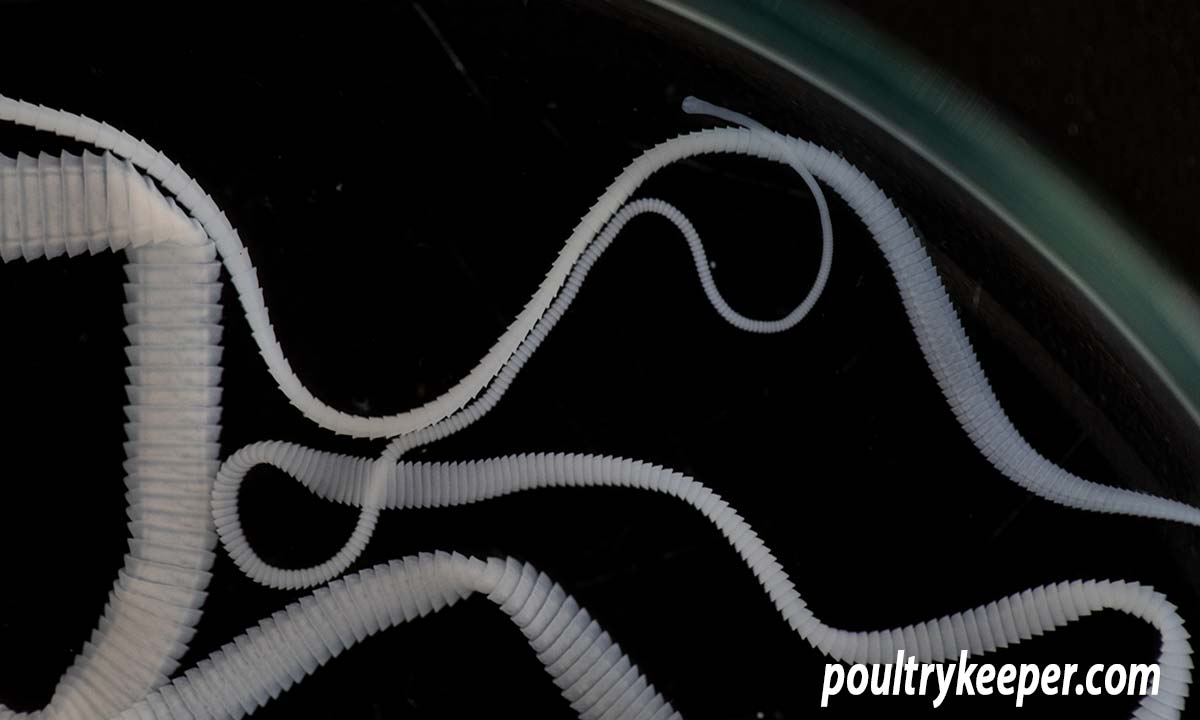
Ribbon-shaped, flat, segmented tapeworms are (79 – 90 mm) long intestinal worms attacking domestic chickens. The most common species, among 4,000 existing, affecting fowl are:
- Raillietina echinobothrida
- Raillietina cesticillus
- Raillietina tetragona
- Davainea proglottina
They live in the chicken intestine, causing weight loss, and you can see their segments in the poop. These are often the only symptoms in healthy and unstressed poultry.
Worms are typically host specific but require an intermediate host, including houseflies, ants, termites, beetles, earthworms, slugs, and snails. Since there are no approved medications against them, your only chance to protect your fowl is to keep intermediate hosts under control.
5. Capillariasis
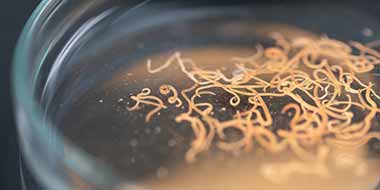
Capillaria (Capillaria species) is a worm better known as threadworm or hairworm. It causes significant, sometimes fatal damage to the chicken digestive tract with primary symptoms like:
- Weight loss
- Reduced egg production
- Pale combs and wattles
The disease is treatable, but destroying these worms can be challenging because of their resistance to drugs. You can help your fowl by offering ivermectin, mebendazole, and fenbendazole orally, with required checking of the therapy efficiency by repeated flotation tests.
External Chicken Parasites
External parasites are non-beneficial tiny creatures living on chicken bodies or in a coop and often jeopardize their health by sucking their blood.
You can quickly recognize affected flock members by increased itching, weight loss, anemia, and reduced egg laying. Their feathers are matted and partially missing, particularly around the vent.
6. Mites
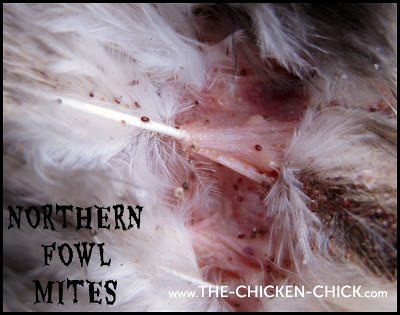
All mite types living in North America severely endanger chickens’ health and cause anemia by feeding on their blood. Affected fowl are nervous, have pale combs and wattles, lose feathers outside the molting season, and reduce egg laying. You can notice that infected birds avoid entering the coop and using nesting boxes.
Red chicken mites (Dermanyssus gallinae)
These 0.04 inches (1 mm) long nocturnal bloodsuckers spend the daytime in the coop and disturb poultry at night. Getting rid of them is tricky since wild birds are carriers and quickly infect domestic poultry flocks in direct contact.
Unfortunately, natural products are inefficient against these menaces, so you should spray your poultry and the coop with synthetic permethrin.
You can also try to dry out the insects’ external skeletons by using diatomaceous earth. The right coop design and regular maintenance are proven methods of prevention.
Northern fowl mites (Ornithonyssus sylvarum)
These 0.04 inches (1 mm) long parasites spend their whole life cycle on chickens’ bodies. After infestation, fowl become depressed, refuse meals, stop egg production, and have ugly, dirty build-ups of mites around the vent.
Left untreated, chickens end up with anemia and die. Unfortunately, there are no licensed products to control these parasites. However, you should improve hygiene in the chicken coop and try killing them by applying diatomaceous earth.
Scaly leg mite (Cnemidocoptes mutans)
These microscopic mites are 0.01 inches (0.25 mm) long, making them invisible to the naked eye. They burrow under chicken leg scales, causing intense irritation and white-pale yellowish crusts on the surface.
Untreated chickens suffer from lumpy feet, lameness, toe loss, and cut-off circulation that leads to gangrene. Using the VetRx solution is highly efficient, but you can’t heal deformities on feet and legs. They stay forever.
7. Lice
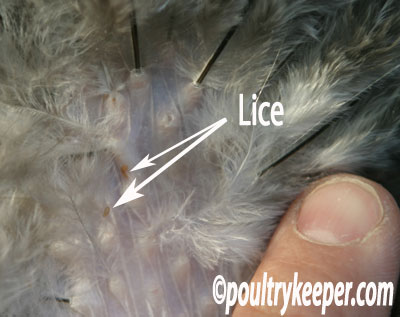
You can find a few lice types living on chickens throughout their lives. These 0.12 to 0.14 inches (3 – 3.5 mm) long parasites lay clusters of 50 to 300 eggs at the feather base, causing irritation, itching, and feather damage, particularly around vents.
Chicken body lice (Menacanthus stramineus) are the most common in chickens. These flat, yellow, 0.04 to 0.12 inches (1 – 3 mm) long creatures lay eggs under fowl wings and around the vent area.
Wild birds infect domestic poultry mainly in fall and winter, and parasites feed on their skin, causing reduced egg production and secondary infections. The only solution to get rid of them is to thoroughly clean and sanitize the coop and replace nesting boxes.
8. Fowl ticks (Argas persicus)
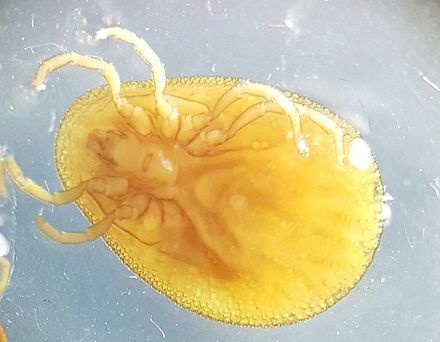
This 0.25 inches (6.3 mm) long tick type infests chickens in warm regions like California and Arizona. These creatures are in a group of soft ticks that live in coops and feed on their hosts’ blood.
Affected fowl lose weight, decrease egg production, and become susceptible to various diseases. The only things you can do is to remove them manually, clean and sanitize the coop, and check your flock for possible secondary bacterial infections.
9. Chicken fleas
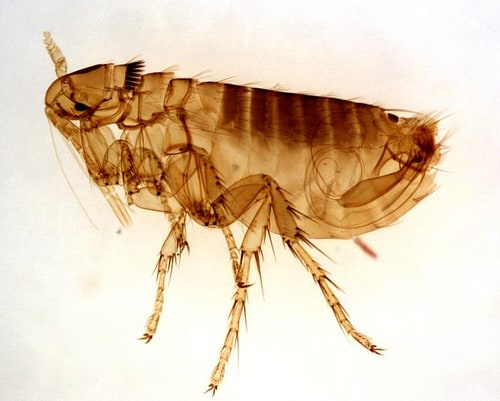
These fleas are brown, less than 0.2 inches (5 mm) long ectoparasites you can spot among the chickens’ feathers, particularly during hot summer months. You can recognize two types, including:
European chick fleas (Ceratophyllus gallinae) – You can find those laterally flattened, 0.08 to 0.1 inches (2 – 2.5 mm) long, dark brown parasites with 24 teeth throughout the US.
Western chick fleas (Ceratophyllus niger, black hen fleas) are 0.25 inches (6.3 mm) long parasites limited to Canada and the Pacific Northwest. They prefer living in chicken droppings.
Sticktight fleas (Echidnophaga gallinacea) typically live in tropical and subtropical zones worldwide. It is estimated that about 20% of flocks in California are affected by these 0.05 to 0.15 inches (1.4 – 3.8 mm) long parasites. You can see them around chickens’ combs, wattles, and eyes.
10. Bedbugs (Cimex lectularius)
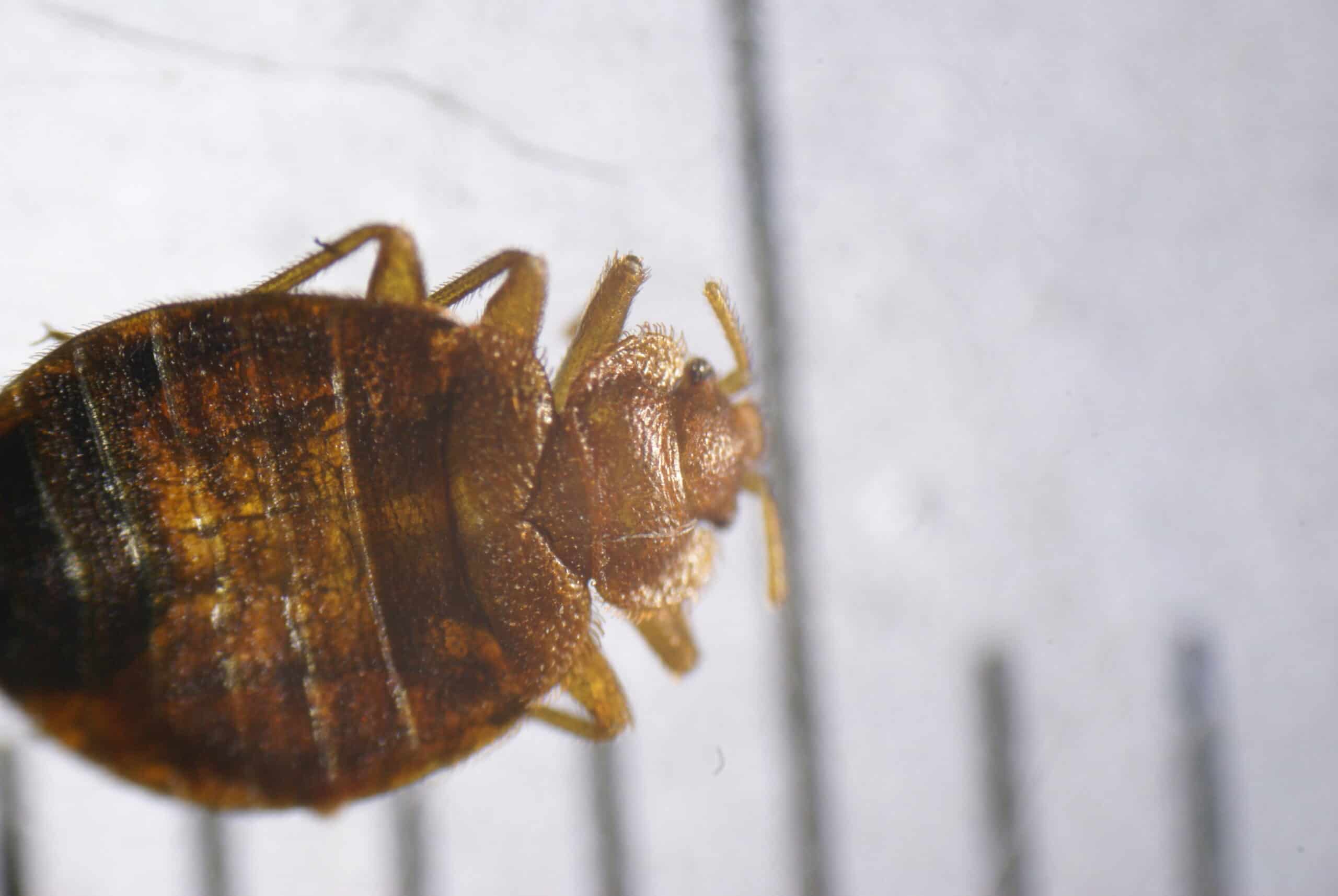
These brown, 0.15 to 0.3 inches (3.8 – 7.6 mm) long human bloodsucking parasites sometimes choose chickens as hosts. You can notice them in the coop during the day while they attack fowl at night and feed on their blood.
One adult female lives approximately a year and lays five eggs daily! There are no other options to get rid of them except to keep the enclosure clean and treat it with appropriate insecticide.
Summary
One of the crucial things when breeding poultry is to protect it from internal and external parasites. The primary parasite vector is wild birds, and the most efficient way to protect your flock is to prevent contact between these two species. Once parasites occur, call the vet and solve the problem before becoming unsolvable.

